Microsoft at 40: More open, bold, goes where users are
On April 4, 1975, Bill Gates and Paul Allen founded Microsoft. The small firm used to develop and sell BASIC interpreters. Little did they know that in the next 40 years, their company will become the biggest software firm in the world, and also bag the title for one of the most valuable companies.
Today, there is a little bit of Microsoft in everybody’s life. Whether it is the desktop computer where Microsoft’s Windows has about 90 percent market share or the company’s Office which is unarguably the best productivity suite available. Maybe you are into gaming and own an Xbox One, or your company relies on Azure cloud services.
Rise of copycats in China: Samsung Galaxy S6 clone at $169 now available for sale

Samsung finally seems to have got things right in its flagship smartphone. After receiving flak for years for using stale design language and cheap plastic material in its Galaxy smartphones, the South Korean technology conglomerate took to the stage last month to announce the metal clad Samsung Galaxy S6 with glass panel at both front and back ends. But if the $679 off-contract retail price seemed exorbitant to you, there is a clone of the S6 out there costing just $169 from a shady Chinese smartphone company.
Called the Goophone S6, the handset resembles the Galaxy S6 and comes in four color options -- golden, white, black, and blue. From the chassis to the design, to the logo, the resemblance is uncanny. As for the hardware, the smartphone comes with a dual-core MTK6572 processor clocked at 1.0GHz or a quad-core MTK6582 clocked at 1.3GHz (if you're happy to shell out an extra $40), and 512MB and 1GB RAM options. The phone runs on Android 5.0 and comes with enticing air gesture control, and heart rate monitor features. Needless to mention that the Goophone S6’s offering is nowhere close to the powerhouse Samsung has launched.
How secure is your bank? Security firm reports vulnerabilities in 70 percent of mobile banking apps
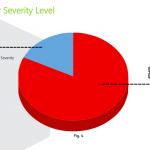
People are becoming increasingly concerned about their security. They use two-step authentication, login alerts, and third-party security services to better protect their email and social media accounts. One would hope for a similar -- if not more secure -- level of protection from our banks. After all, this is the place where we put most of our earnings and savings. However, apparently we are all mistaken. Mobile security firm Appvigil is reporting that as many as 70 percent of the top 100 mobile banking apps on the Android operating system in the APAC region are vulnerable to security attacks and data leaks. Don’t live in the said region? That’s no reason to relax. The report further pinpoints vulnerabilities in mobile banking apps found in other regions as well.
The security firm tested the mobile banking apps of the top 29 Indian banks and 71 more in the Asia Pacific region and the results are staggeringly bad. "Most of the mobile banking apps failed and many didn’t employ even the basic security checks expected. The communication between the apps & their servers is still in the unencrypted format i.e. in HTTP instead of HTTPS", the report reveals.
More Android apps coming to Chromebook as Google opens ARC program to all developers

Last year Google introduced support for Android apps on its Chromebook lineup. Since the announcement, we have seen several popular apps arrive at the Chrome Web Store, including Duolingo, Vine, and Flipboard, but the number of such ported apps has been pretty low so far. In an effort to lure in more uber-apps like VLC and others to Chrome OS, the company announces at an event, that it is opening the ARC program -- previously only accessible to select firms -- to all developers. The move will foster the growth of apps at the Chrome Web Store.
The Mountain View-based technology company last year at its developer conference I/O introduced support for Android apps on Chrome OS-powered laptops. The company had showcased a native client extension called “App Runtime for Chrome (ARC)” that runs Android apps on a Chrome OS-powered notebook almost natively through a sandboxed Dalvik VM.
At $800, Xiaomi's 55-inch 4K Mi TV 2 is the best freaking smart TV you can't purchase (yet)

Xiaomi is back in the news once again. At an event in China, the Chinese technology conglomerate today launches the much anticipated new variant of its 4K TV. Called the Mi TV 2 (yep, no Mi TV 3 yet), the new version sports a 55-inch display and costs RMB 4,999 (equivalent to $800 USD).
The world’s most valuable startup gleaned a lot of attention last week when it launched the 40-inch, full-HD variant in its Mi TV 2 lineup. The 55-inch television set is the successor to last year's 49-inch Mi TV 2 that retails for $640. The TV, which was until now only available in China, is expected to launch in India and other regions later this year.
India's latest attempt in the digital space: Use open-source software to build e-governance apps

The Indian government is becoming increasingly focused towards the development of the country’s technology sector. Under the reign of Prime Minister Narendra Modi, the government last year announced Make in India and Digital India programs through which it plans to widespread the reach of modern technologies to more places while creating more jobs in the country, as well as promote local vendors over others.
The latest step in this direction is to make it mandatory to use open-source software in building apps and services. The government hopes that this will ensure efficiency, transparency and reliability of such services at affordable costs. The policy will require all government organizations to consider open-source solutions while implementing e-governance applications and systems.
India's Supreme Court protects freedom of speech -- strikes down 'unconstitutional' IT Act Section 66A

It’s a big day for freedom of speech in India. The country’s Supreme Court today scrapped an ambiguous and controversial law which governed the consequences of posting sensitive and offensive content on the web. The ruling challenges the IT Act, including Section 66A, Section 79, and Section 69. With this decision the Supreme Court -- the highest judicial forum and final court of appeal under the Constitution of India -- ruled against the Central government which had defended the section.
The bench which consisted of Justice Chelameswar and Justice Rohinton Fali Nariman struck down Section 66A of the IT Act. For a refresh, the Section 66A orders 3 years imprisonment for anyone making offensive statements on the web; Section 79 forces the intermediary to take down the content from the web; and Section 69 allows blocking of online content.
At $320 Xiaomi's new 40-inch Android Mi TV 2 is the best FHD TV you can't buy (yet)

At an event in China today, technology conglomerate Xiaomi introduces a new TV set to its Mi TV lineup. The new TV -- as we had expected -- is a smaller and cheaper variant of last year's Mi TV 2 with a lower resolution display. The new Mi TV 2 has a 40-inch display with Full HD (1920 x 1080 pixels) screen resolution. It is priced at 1,999 yuan (equivalent to $320), and is available for sale in China through the company's website Mi.com.
As for the specification, the new variant of Mi TV 2 sports a Sharp SDP X-GEN LED-backlit panel that offers a contrast ratio of 5000:1. It is powered by a quad-core 1.1GHz Cortex A9 processor paired with 2GB of RAM and 8GB of internal storage. With a frame of 14.5mm waistline, the smart television set runs on Android 4.4-based MIUI TV OS. The company assures that it will soon release the Lollipop update to it.
Xiaomi all set to launch the most affordable 4K smart TV you can't easily purchase

Chinese technology conglomerate Xiaomi will be launching its new TV models tomorrow, the company has teased on Twitter. Xiaomi reportedly plans to launch two models in its Mi TV lineup -- one of which will be the successor to 49-inch 4K capable Mi TV 2, while the other will be a smaller-sized television set with FHD display.
Xiaomi has earned a name for itself for selling incredibly cheap-priced smartphones and other mobile accessories, and its Mi TV is no exception. The Chinese company launched the Mi TV 2 last May in China for the equivalent of $640. As for the specs, it packs in a 49-inch display with 4K screen resolution. The smart TV is powered by a quad-core MediaTek MStar 6AM918 CPU paired with Mali0450 MP4 GPU and 2GB of RAM with 8GB expandable storage. Running on Android, the TV has MIUI ROM skin on top.
Microsoft's desperate to see you try Band: Giving away free Starbucks Card, kickstarts a contest
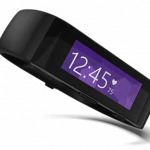
Before Apple begins to sell its Watch in April, rival smartwatch and activity tracking device makers are trying to use the remaining days to remind you about their wearable gadgets. Google earlier this week posted an extended trailer of its Android Wear wearable operating system, and now Microsoft is taking its turn on the podium to talk about its fitness tracker Band. The company is running two enticing deals to lure in users to test drive the Microsoft Band.
Microsoft is so keen to see you try the Band that the company is giving away $5 Starbucks cards to anyone in the United States who bothers to visit the Microsoft Store and checks out the Band. That’s it -- you aren't obligated to purchase the tracker. In addition, the Redmond, Washington-based company is also running a contest valid until March 22nd, wherein users from the US can participate and stand a chance to win $200. You can visit the Store here for more info and to participate.
Microsoft's latest attempt to save Windows Phone: Make Windows 10 ROMs for Android
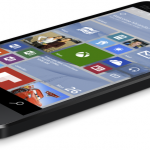
In its five years of existence, Windows Phone (formerly known as Windows Mobile) has managed to garner only 3 percent mobile market share. Microsoft's tiled operating system is still struggling to give Google’s Android and Apple’s iOS a serious challenge. But if you thought the Redmond-based company should be looking for an exit strategy by now, you will be surprised with what Microsoft has in mind.
Over the last few months, we learned that Microsoft is increasingly concerned about closing the Windows Phone’s infamous "app gap" problem. Referred to as the Plan A, as per a report by Mary Jo Foley, Microsoft intends to do this by introducing support for universal apps which will allow developers to quickly turn their Windows applications into Windows Phone apps with minimal effort.
Microsoft launches Lumia 430 for $70 -- the cheapest Windows smartphone yet

It’s been a while since Microsoft launched a flagship smartphone. The company is seemingly more focused towards making cheap smartphones and pushing these low-end devices to emerging markets. In the latest attempt, the company today launches the Lumia 430. Priced at $70 USD before taxes, the Lumia 430 is the "most affordable" Windows Phone smartphone to-date.
But surprisingly, the hardware offered by this dirt cheap smartphone isn’t as bad as one would expect. The Lumia 430 sports a 4-inch display with WVGA screen resolution. Inside the smartphone there's a 1.2GHz dual-core Qualcomm Snapdragon 200 processor coupled with 1GB of RAM and 8GB internal storage which could be expanded up to 128 gigs using a microSD card. The device is powered by a 1,500mAh battery, which is rather small, but the company promises up to 8.4 hours of talk time on a single charge or up to 19 days of life in standby mode.
Windows 10 IoT: How Microsoft plans to get it right for Internet of Things devices
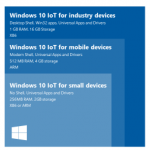
Microsoft’s forthcoming Windows 10 operating system will, in addition to powering desktop computers and mobile devices, also provide a platform for Internet of Things (IoT) gadgets. The Redmond-based company -- which earlier this year announced that it will be providing its operating system for free for such devices -- is shedding more light on its plan.
Microsoft notes that Windows 10 IoT will power a range of IoT devices including small products like gateways, mobile point-of-sale, ATMs, powerful industry devices like robotics, and specialty medical devices such as ultrasound machines. Despite their miniature form factor, the company assures enterprise-grade security from the devices to cloud, while also providing them with native connectivity for machine-to-machine and machine-to-cloud with Azure services.
Xiaomi testing Windows 10 for phones -- could Microsoft use the company for flagship?
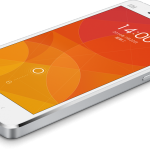
Microsoft confirms today that Windows 10 -- its forthcoming operating system for desktop, mobile, Xbox, and IoT platforms -- will be releasing this Summer in 190 countries and 111 languages. On a blog post, the Windows Phone-maker also announces that it has entered into a partnership with Xiaomi, China's top smartphone vendor to test Windows 10 for phones, suggesting that the two companies are working to make a flagship-level smartphone.
Microsoft notes that the company is testing Windows 10 with select Xiaomi Mi 4 power users. The Mi 4 is XIaomi's current flagship smartphone, which runs Android. "Through a new program with Xiaomi, one of the top smartphone distributors in the world, a select group of Xiaomi Mi 4 power users will be invited to help test Windows 10 and contribute to its future release later this year", the company notes on a blog post. "These power users will have the opportunity to download the Windows 10 Technical Preview – installing it and providing their feedback to Microsoft".
Windows 10 compresses system files and removes recovery image to increase disk space

Microsoft cares about the amount of formatted, usable storage space users get on their Windows-running machines. The Redmond-based company announced today that, in an attempt to provide users with more storage on their hard-drives, Windows 10 operating system uses some impressive space-saving techniques. The forthcoming operating system uses file compression technology to save around 1.5GB of storage on 32-bit systems and 2.6GB on 64-bit machines.
Furthermore, the software firm notes that it is also stopping using a separate recovery image on its latest desktop operating system. PC makers use a separate recovery image on the computers they ship. Depending on the operating system version and the manufacturer, the space could be anything from 4GB to up to 20GB. The system recovery image shipped by the PC makers includes the disk image of a licensed Windows copy bundled with driver software and some other essentials and bloatware.
Manish's Bio
Manish is pursuing his Bachelors of Technology in computer science and engineering but spends more time in writing about technology. He has written for a number of Indian and international publications including BGR India, MediaNama, and Digit magazine among others. When not writing, you would find him ranting about the state of digital journalism on Twitter.
BetaNews, your source for breaking tech news, reviews, and in-depth reporting since 1998.
© 1998-2025 BetaNews, Inc. All Rights Reserved. About Us - Privacy Policy - Cookie Policy - Sitemap.
